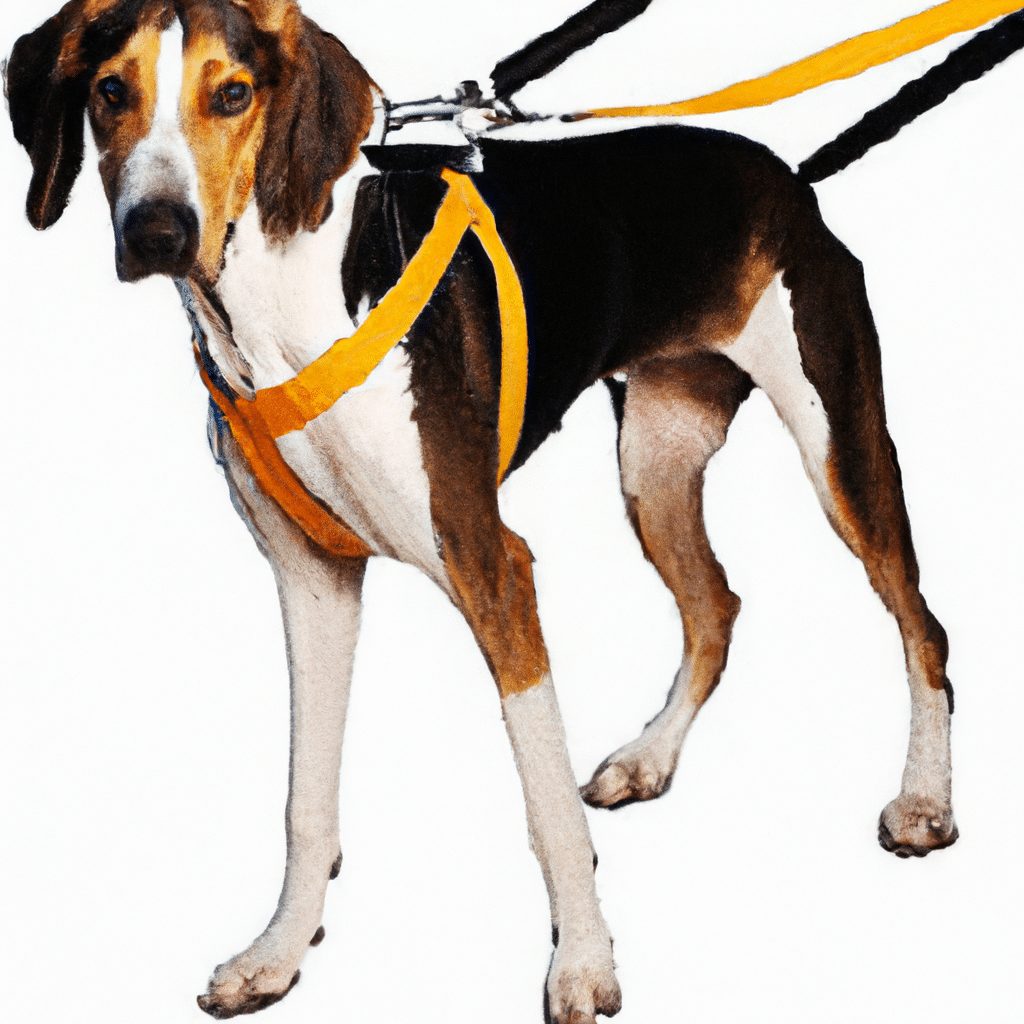In our latest article, we explore a common conundrum that many dog owners face: how to handle dogs that pull on the leash. We take a closer look at harnesses and their potential ability to assist in managing this behavior. By examining the impact of harnesses on leash pulling, we aim to provide dog owners with valuable insights and practical solutions. So, if you’re curious about whether harnesses can make a difference, join us as we explore this intriguing topic.
Why Dogs Pull on the Leash
Walking our furry friends is a wonderful way to bond with them and provide them with much-needed exercise and mental stimulation. However, it can be quite frustrating when dogs continuously pull on the leash, making the walk less enjoyable for both them and us. There are several reasons why dogs pull on the leash, and understanding these reasons is key to finding a solution.
Lack of Training
One of the primary reasons why dogs pull on the leash is a lack of proper training. If a dog has never been taught how to walk politely on a leash, they may resort to pulling as a natural instinct. Without sufficient training, our dogs simply do not know that they are expected to walk calmly by our side. Therefore, it is crucial to invest time and effort in training our furry friends to walk on a loose leash.
Excitement and Energy
Another common reason why dogs pull on the leash is their excitement and excess energy. Dogs naturally have a lot of energy, and when they are cooped up indoors for long periods, they become more prone to pulling on the leash once given the opportunity to go outside. Their exuberance and desire to explore can lead to pulling as they try to reach interesting sights, smells, or even other animals.
Curiosity and Exploration
Dogs are naturally curious creatures, and their instincts drive them to explore new environments. When on a leash, dogs can feel restricted in their ability to satisfy their curiosity fully. As a result, they may pull in an attempt to get closer to an intriguing scent or investigate something that captures their attention. This desire for exploration and discovery can often override their training and lead to pulling behaviors.
Understanding Harnesses
Harnesses are practical tools designed to help us regain control over our dogs‘ pulling behavior. They are superior to traditional collars because they distribute the pressure more evenly across the dog’s body, making it more comfortable and less harmful for them. Harnesses come in a variety of styles, each with its own unique features and benefits.
Types of Harnesses
There are several types of harnesses available on the market, each designed to suit different needs and preferences. The most common types include back-clip harnesses, front-clip harnesses, and head halters. Back-clip harnesses have the attachment point on the dog’s back, while front-clip harnesses have the attachment point on the dog’s chest. Head halters, on the other hand, provide control by gently directing the dog’s head’s direction.
Benefits of Using a Harness
Using a harness has numerous benefits, especially when dealing with dogs that frequently pull on the leash. Harnesses provide better control, as the attachment point is closer to the dog’s center of gravity, limiting their ability to pull forward. Additionally, harnesses do not put pressure on the dog’s neck, reducing the risk of injury. The evenly distributed pressure on their body also makes it a more comfortable alternative to traditional collars.
How Harnesses Can Help with Dogs That Pull on the Leash
Harnesses can be incredibly helpful in curbing the pulling behavior of dogs. Let’s take a closer look at some ways in which harnesses can assist in managing dogs that pull on the leash.
Even Distribution of Pressure
As mentioned earlier, harnesses distribute the pressure more evenly across the dog’s body compared to collars. This even distribution of pressure reduces the strain on the dog’s neck and throat, resulting in a more comfortable walking experience. By avoiding discomfort or pain, dogs are less likely to pull on the leash.
More Control and Safety
With the attachment point on the dog’s back or chest (depending on the harness type), we gain greater control over our dog’s movements. This control allows us to redirect their attention and guide them back on track when they attempt to pull. Furthermore, harnesses provide added safety, particularly for dogs that may have respiratory issues or are prone to neck injuries.
Reduced Risk of Injury
Pulling on the leash can put a significant strain on a dog’s neck, potentially leading to injuries such as strained muscles, tracheal damage, or even collapsed trachea. By utilizing a properly fitted harness, the pressure from pulling is evenly distributed, minimizing the risk of such injuries. Harnesses are particularly beneficial for smaller dog breeds, which are more vulnerable to neck-related health issues.
Choosing the Right Harness
Choosing the right harness for our furry friends is crucial to ensure their comfort, safety, and effectiveness in curbing pulling behaviors. When selecting a harness, there are several factors to consider.
Size and Fit
Getting the right size and fit for a harness is essential to ensure both effectiveness and comfort. A harness that is too loose may allow the dog to easily slip out, while one that is too tight can restrict their movement and cause discomfort. It is essential to measure our dog’s girth accurately and refer to the manufacturer’s sizing guide before making a purchase.
Front-Clip vs. Back-Clip
Deciding between a front-clip and a back-clip harness depends on our dog’s specific needs and behavior. A front-clip harness is ideal for dogs that pull excessively, as it allows us to redirect their attention towards us. On the other hand, a back-clip harness may be suitable for dogs that are already well-behaved on a leash.
Padding and Comfort
Choosing a harness with sufficient padding is crucial to enhance our dog’s comfort, especially during longer walks. Padding helps prevent chafing and irritation, ensuring that our furry friends do not develop any discomfort or adverse reactions to wearing the harness. It is also worth considering the material of the harness, as some dogs may have sensitivities or allergies to certain fabrics.
Durability and Quality
Investing in a durable and high-quality harness is essential, as it ensures the product’s longevity and effectiveness. A well-constructed harness made from strong materials will withstand frequent use and maintain its shape, providing us with long-term value. Checking product reviews and recommendations from trusted sources can help us make an informed decision.
Getting Your Dog Used to a Harness
Introducing a harness to our dogs properly is crucial to ensure a positive experience for them. Here are some steps to follow when getting our furry friends used to wearing a harness.
Slow Introduction
Introduce the harness to our dogs gradually, allowing them to sniff and investigate it at their own pace. Offering treats or using their favorite toy with the harness nearby can help create a positive association.
Positive Reinforcement
Rewarding our dogs with treats, praise, or play whenever they show interest in or allow us to put the harness on is vital. Building positive associations with the harness through rewards can help them feel more comfortable and cooperative throughout the process.
Practice in Controlled Environments
Start by having our dogs wear the harness indoors or in a familiar and calm outdoor space. This controlled environment allows them to get used to the sensation of wearing the harness without the distractions of a stimulating environment. Gradually increase the duration of wearing the harness and introduce it in more stimulating settings once they are comfortable.
Training Techniques to Stop Leash Pulling
Using training techniques alongside the harness can effectively stop leash pulling behaviors. Here are some techniques to consider:
Positive Reinforcement
Positive reinforcement involves rewarding our dogs with treats, praise, or play whenever they walk calmly by our side without pulling on the leash. This technique reinforces the desired behavior and motivates our dogs to continue walking politely.
Redirecting Attention
If our dogs start to show signs of pulling, redirecting their attention to us can help divert their focus from whatever is enticing them to pull. Using a treat or a simple “watch me” command can help regain their focus and keep them engaged with us.
Desensitization
Desensitization involves gradually exposing our dogs to the triggers that cause them to pull on the leash. By starting at a distance where they can remain calm and gradually decreasing the distance, we can help them overcome their reactivity.
Loose Leash Walking
Teaching our dogs to walk on a loose leash involves consistently reinforcing the behavior of walking without pulling. By stopping or changing direction whenever they pull and rewarding them for walking calmly, we can teach them that pulling will not get them closer to their desired destination.
Additional Tools and Techniques to Aid Training
While harnesses are effective tools, there are other techniques and tools that can aid in training our dogs to stop pulling on the leash.
Head Halters
Head halters, such as the Gentle Leader or Halti, work by gently controlling a dog’s head direction. By having control over their head, we can easily redirect their attention and guide them back to walking without pulling. Head halters may take some time for dogs to get used to, so gradual introduction and positive reinforcement are crucial.
Martingale Collars
Martingale collars are designed to provide a gentle correction when a dog pulls on the leash. They have a limited slip feature that tightens slightly when the dog pulls, preventing them from slipping out of the collar. Martingale collars are effective for dogs that need a reminder to walk politely, but it is important to use them appropriately and consult professional guidance if needed.
Professional Training
For dogs with persistent and severe leash pulling issues, seeking professional help from a certified dog trainer or behaviorist is highly recommended. These professionals can assess our dog’s specific needs and tailor a training program that addresses the root causes of the pulling behavior.
Common Challenges and Solutions
While harnesses are effective tools in curbing leash pulling, there may be some common challenges that we may encounter. Here are some solutions to address these challenges:
Pulling Despite Wearing a Harness
If our dog continues to pull despite wearing a harness, it may be necessary to reassess the fit and comfort of the harness. Ensuring that the harness is correctly fitted and choosing a suitable style for our dog’s behavior can make a significant difference. It may also be helpful to seek guidance from a professional trainer to address any underlying training issues.
Escaping or Chewing the Harness
Some dogs may try to escape or chew on the harness, particularly when they are not yet accustomed to wearing one. Gradual introduction, positive reinforcement, and using distractions such as treats or toys can help redirect their focus and keep them from attempting to remove or chew on the harness.
Fear or Anxiety
Some dogs may exhibit fear or anxiety when wearing a harness, especially if they have had negative experiences in the past. In such cases, it is important to approach the training process with patience, ensuring that we create a positive and stress-free environment. Seeking guidance from a professional trainer or behaviorist can also be beneficial in addressing fear or anxiety-related issues.
Tips for Using a Harness Effectively
To make the most of using a harness for leash training, here are a few tips to keep in mind:
Consistency and Persistence
Consistency is key in any training program. Ensure that rules and expectations remain the same throughout the process. This consistency combined with persistence will help our dogs understand what is expected of them and reinforce the desired behaviors.
Regular Exercise and Mental Stimulation
Engaging in regular exercise and providing our dogs with mental stimulation can help reduce their excess energy and excitement, making leash training more manageable. A tired dog is more likely to be focused and receptive to learning.
Using Proper Leash Techniques
In addition to using a harness, mastering proper leash handling techniques is important. Avoid tense or jerky movements, and maintain a relaxed grip on the leash. A steady and calm demeanor will help our dogs feel more secure and less likely to pull on the leash.
Seeking Professional Help if Needed
If we encounter persistent challenges or have concerns about our dog’s behavior, seeking professional help from a certified dog trainer or behaviorist is a wise decision. These professionals have the knowledge and experience to provide tailored guidance and support to address specific training needs.
Conclusion
Harnesses can be valuable tools in managing dogs that pull on the leash. By distributing pressure more evenly, providing added control and safety, and reducing the risk of injury, harnesses offer a practical and humane solution to leash pulling behaviors. Choosing the right harness, introducing it gradually, and combining its use with positive reinforcement training techniques can help our dogs learn to walk politely on a loose leash. With consistency, persistence, and a little bit of patience, we can enjoy peaceful and enjoyable walks with our furry companions.











































